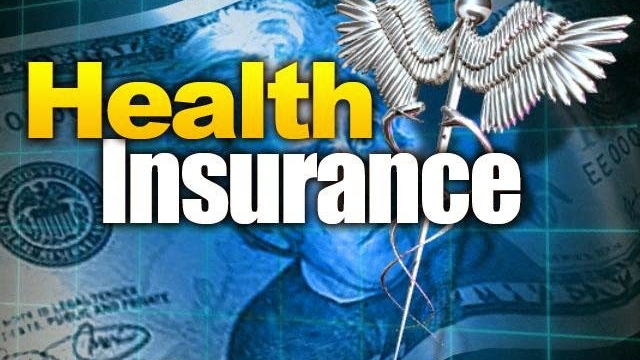The Insider’s Guide to Navigating the World of Car Insurance
Car insurance is an essential aspect of owning a vehicle. Whether you are a new driver or have been on the road for years, having the right car insurance coverage is crucial for your financial security and peace of mind. But navigating the world of car insurance can often be overwhelming, with its complex jargon and numerous options. That’s why we’ve prepared this insider’s guide to help you understand the ins and outs of car insurance, making the process easier to navigate.
So, what exactly is car insurance? Simply put, car insurance is a contract between you and an insurance company that financially protects you in the event of an accident or damage to your vehicle. It serves as a safety net, covering the costs of repairs or medical expenses that may arise from an unfortunate incident. However, the scope of coverage can vary depending on the type of policy you choose. Understanding the different types of car insurance, as well as the factors that impact your premiums, will empower you to make informed decisions when it comes to selecting the right insurance plan for your needs.
Now that we’ve laid the groundwork, let’s dive deeper into the world of car insurance. From the types of coverage available to the factors that influence your premiums, we’ll provide you with the knowledge and tools necessary to navigate this complex landscape with confidence. So, buckle up and get ready to embark on a journey through the intricate realm of car insurance.
Understanding Car Insurance Coverage
Car insurance is a vital aspect of owning and operating a vehicle. It provides financial protection in case of accidents, theft, or damage to your car or others’ vehicles. Understanding what car insurance entails is crucial for all drivers.
One key element of car insurance coverage is liability insurance. This type of coverage is required by law in most states. It helps cover the costs related to property damage and injuries to others that you are responsible for in an accident. Liability insurance typically consists of two parts: bodily injury liability and property damage liability.
Bodily injury liability coverage helps pay for medical expenses, rehabilitation, and legal fees if you injure someone in an accident. It also provides compensation for lost wages or income due to injuries. On the other hand, property damage liability coverage helps cover the costs of repairing or replacing someone else’s vehicle or other property if you are at fault in an accident.
Another important aspect of car insurance coverage is collision coverage. This type of coverage helps pay for repairs or replacement of your vehicle if it is damaged in a collision, regardless of who is at fault. Collision coverage is particularly valuable when you have a new or valuable car, as it helps ensure that you can repair or replace it in case of an accident.
Comprehensive coverage is yet another component of car insurance coverage. It helps protect against damage caused by events other than collisions, such as theft, vandalism, natural disasters, or hitting an animal. Comprehensive coverage is typically optional, but it provides valuable peace of mind and can be crucial in certain scenarios.
Understanding the various aspects of car insurance coverage is essential for every driver. It allows you to make informed choices when selecting the right coverage for your needs. By having a comprehensive understanding of car insurance, you can ensure that you are adequately protected on the road.
Factors Affecting Car Insurance Premiums
The cost of car insurance premiums can vary significantly depending on a range of factors. Insurers consider several aspects when determining the cost you’ll have to pay for your car insurance. Some of the key factors that affect car insurance premiums include:
-
Driving Record: Your driving history plays a crucial role in determining the cost of your car insurance. If you have a clean record with no accidents or traffic violations, insurers typically see you as a lower risk and will offer lower premiums. However, if you have a history of accidents or speeding tickets, your premium may increase.
-
Age and Gender: Statistically, younger drivers are considered riskier, as they have less driving experience. Therefore, car insurance premiums for younger drivers tend to be higher. Additionally, gender can also impact premiums, as certain age groups and genders are statistically more likely to be involved in accidents.
-
Car Make and Model: The make and model of your car can significantly impact your insurance premium. Insurance companies assess the potential repair and replacement costs of your vehicle in the event of an accident. Generally, more expensive or high-performance cars will have higher premiums compared to economical or family-oriented vehicles.

It’s important to note that these factors can vary among insurance companies, and some insurers may prioritize certain factors more heavily than others. Understanding the elements influencing car insurance premiums can help you make informed decisions when selecting the right insurance coverage for your vehicle.
Tips for Choosing the Right Car Insurance
-
Evaluate Your Coverage Needs: Before purchasing car insurance, it’s important to assess your coverage requirements carefully. Consider factors such as the age and value of your car, your driving habits, and your budget. Understanding your needs will help you determine the appropriate level of coverage, whether it’s liability-only insurance or a comprehensive policy.
-
Compare Quotes: To get the best car insurance deal, it’s crucial to compare quotes from different insurance providers. Take the time to research and request quotes from several companies. Make sure you’re comparing similar coverage options to ensure a fair comparison.
-
Read the Fine Print: When getting car insurance, thoroughly read and understand the policy terms and conditions. Pay close attention to the coverage limits, deductibles, exclusions, and any additional features or benefits. It’s essential to have a clear understanding of what is included in your policy and any potential limitations or restrictions.
Remember, selecting the right car insurance involves careful consideration of your unique circumstances. By evaluating your coverage needs, comparing quotes, and understanding the policy details, you can make an informed decision that offers you the best protection and peace of mind on the road.




